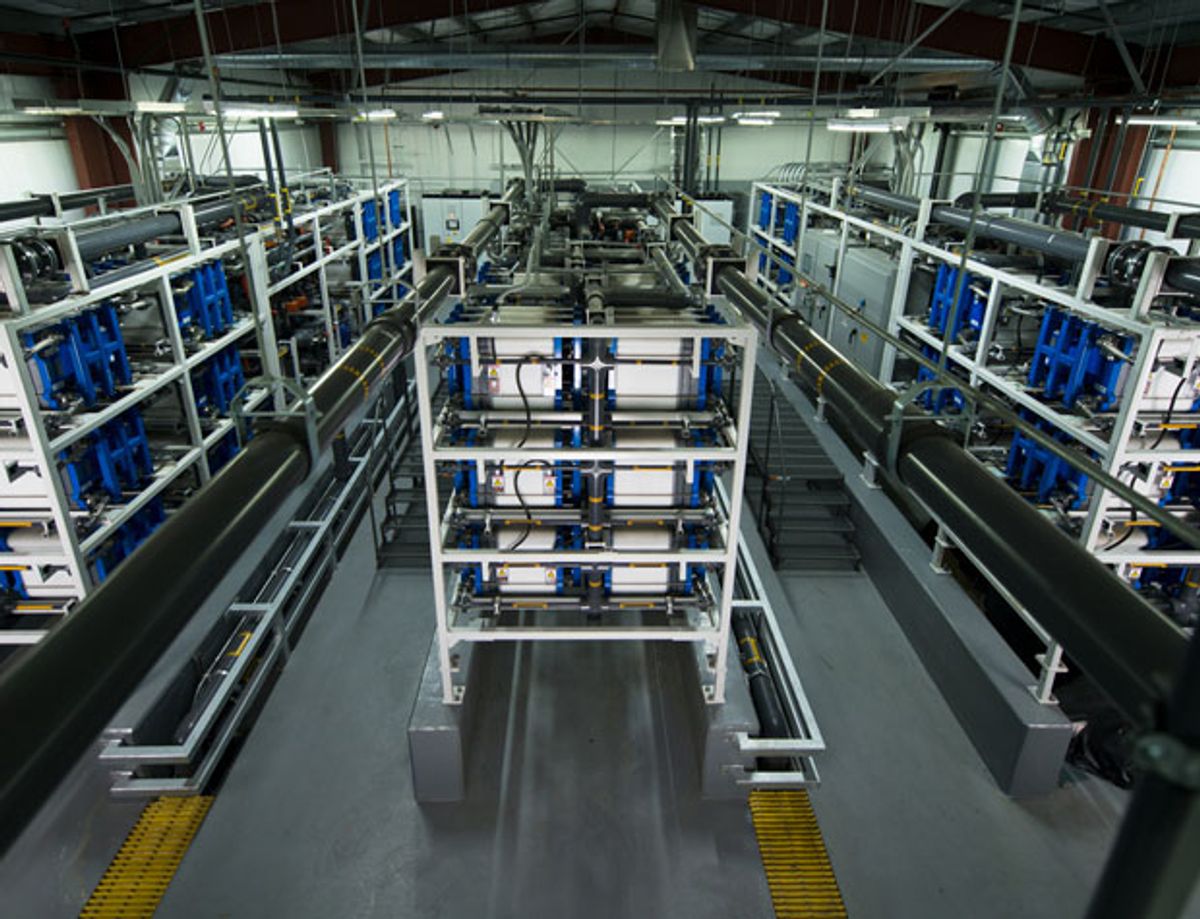The vanadium redox flow battery is not a phrase that comes tripping off the tongue. It certainly is not a household phrase. But it's a technology we are going to be hearing more about in grid-scale energy storage, as it is coming around the outside track at an accelerating speed.
Two weeks ago, at IEEE's fourth annual Innovative Smart Grid Technologies Conference (ISGT, a relatively small but well-focused event), one of the most interesting presentations concerned a novel vanadium reflow battery that is being put through its paces in a northwest European town. Meanwhile, a German vanadium flow battery innovator has teamed up with an American vanadium electrolyte producer in a strategic alliance.
The developments are noteworthy because while grid-scale energy storage is crucial to the long-term future of intermittent renewables like wind and solar, the really promising candidate technologies can probably be counted on one hand.
In a panel on "international viewpoints" at ISGT, Hongfeng Li of Prudent Energy described the try-out of the company's trademarked VRB-ESS vanadium redox flow battery in a part of Europe (probably Germany) where the grid is required to buy wind energy at 9 eurocents per kilowatt-hour and photovoltaic energy at 20 cents/kWh (presumably in a feed-in tariff system). The objective was to determine whether the flow battery could help reduce the town's dependence on the grid and provide some support for it. The finding was that the VRB-ESS could yield revenue and improve grid performance.
This month, the State Grid Corporation of China will commission a 2 MW/8MWh VRB-ESS battery system, as part of the Zhangbei National Wind/PV/Energy Storage and Transmission Joint Demonstration Project, says Li.
A salient feature of the VRB-ESS, as described on the company's website, is that a unit's storage and power levels can be scaled independently, as energy storage duration is a simple function of how much electrolyte its tanks hold (see diagram, immediately below). Each unit relies on an electronic control system, enabling it to provide the grid with both real and reactive power. The optimal sizing of the system in a microgrid environment appears to be 3 MW of power and four hours' worth of energy storage, said Li.
Prudent Energy's Li observed that vanadium is readily available; it is used in steel manufacturing and can be recovered from ash. It can also be mined. A company that has rights to a lot of it, American Vanadium, was profiled here 18 months ago. That firm has now teamed up with the German company Gildemeister, which has taken a somewhat different approach to the vanadium flow battery with a fixed-size energy storage unit it calls the CellCube. Gildemeister has tested the design at the German rustbelt city Bielefeld, where it provides energy when the sun's not shining or the winds have died. "American Vanadium and Gildemeister [will] explore various joint venture and partnership arrangements with the objective of being a leading provider of energy storage and micro grid solutions in North America," said their press release dated 18 February.
With promising candidates for grid-scale energy storage few and far between, every new entrant and every new idea will be more than welcome.
Images: Prudent Energy




